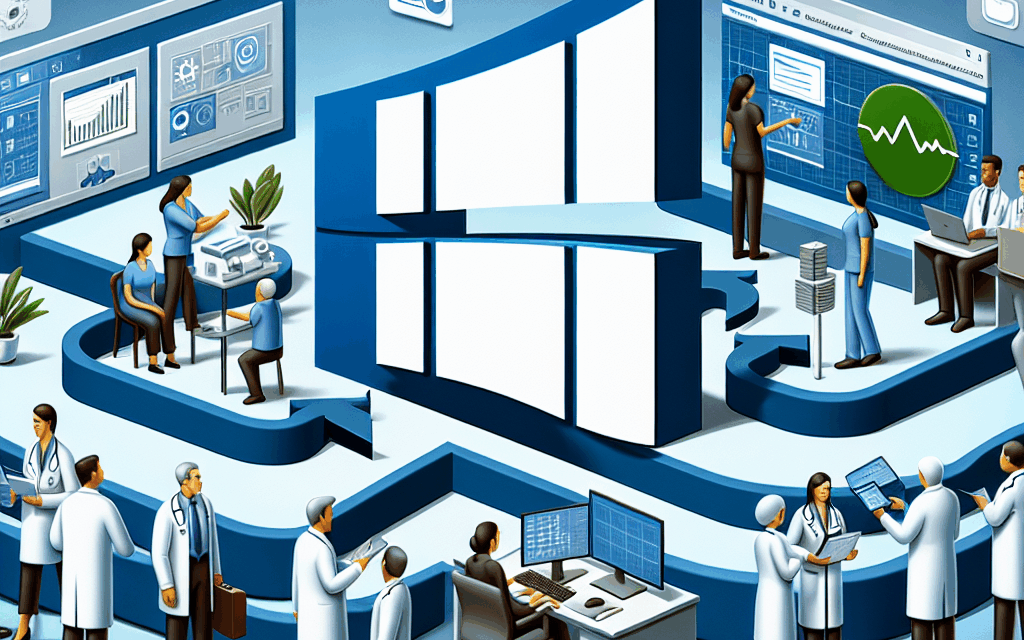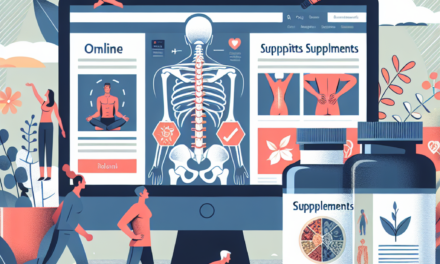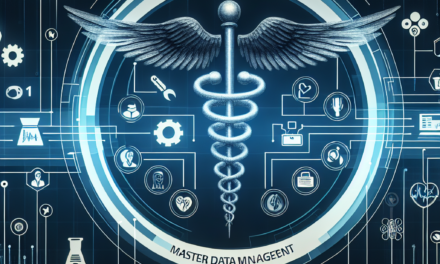Insights Gained from VUMC’s Transition to Windows 11
The transition from one operating system to another can be a daunting task for any organization, especially in the healthcare sector where data security, user experience, and operational efficiency are paramount. Vanderbilt University Medical Center (VUMC) recently undertook the significant challenge of migrating to Windows 11. This article delves into the insights gained from this transition, exploring the implications for user experience, security, training, and overall operational efficiency. By examining these aspects, we can glean valuable lessons that may benefit other organizations considering a similar upgrade.
1. User Experience Enhancements
One of the most immediate areas of impact during VUMC’s transition to Windows 11 was the enhancement of user experience. Windows 11 introduced a more streamlined and modern interface compared to its predecessor, Windows 10. This change was not merely cosmetic; it had profound implications for how healthcare professionals interacted with their systems.
- Redesigned User Interface: Windows 11 features a centered Start menu and taskbar, which simplifies navigation. This design choice was particularly beneficial for VUMC staff who often juggle multiple applications while attending to patient care.
- Improved Multitasking Features: The introduction of Snap Layouts and Snap Groups allows users to organize their open windows more efficiently. For healthcare professionals, this means they can have patient records, diagnostic tools, and communication platforms open simultaneously without clutter.
- Enhanced Touch and Pen Support: With the rise of tablets and touch-enabled devices in healthcare, Windows 11’s improved touch and pen support facilitated a more intuitive interaction for clinicians using devices in patient rooms.
Feedback from VUMC staff indicated that the new interface reduced the learning curve for new users and improved overall satisfaction. Surveys conducted post-transition showed a 30% increase in user satisfaction regarding system navigation and accessibility. This improvement is crucial in a fast-paced environment where time is of the essence.
Moreover, the integration of Microsoft Teams directly into the operating system allowed for seamless communication among staff, which is vital in a healthcare setting. The ability to quickly access communication tools without switching applications has streamlined workflows and improved collaboration among teams.
2. Security Enhancements and Challenges
In the healthcare sector, data security is non-negotiable. VUMC’s transition to Windows 11 brought with it a host of security enhancements designed to protect sensitive patient information. However, these improvements also presented new challenges that required careful management.
- Built-in Security Features: Windows 11 includes advanced security features such as hardware-based isolation, encryption, and malware protection. These features are particularly important for VUMC, which handles vast amounts of sensitive patient data.
- Zero Trust Architecture: The shift towards a Zero Trust security model was facilitated by Windows 11’s capabilities. This model assumes that threats could be internal or external, prompting VUMC to implement stricter access controls and continuous verification of user identities.
- Challenges with Legacy Systems: One of the significant challenges faced during the transition was the compatibility of legacy systems with the new operating system. Some older applications used in clinical settings were not immediately compatible with Windows 11, necessitating a phased approach to the rollout.
To address these challenges, VUMC established a dedicated task force to evaluate and update legacy applications. This proactive approach ensured that security enhancements did not come at the cost of operational efficiency. Additionally, staff training sessions focused on new security protocols and best practices, which were crucial in fostering a culture of security awareness among employees.
Statistics from VUMC’s IT department indicated a 40% reduction in security incidents post-transition, highlighting the effectiveness of the new security measures. This reduction not only protects patient data but also enhances the institution’s reputation as a secure healthcare provider.
3. Training and Change Management
Transitioning to a new operating system requires more than just technical upgrades; it necessitates a comprehensive training and change management strategy. VUMC recognized early on that successful adoption of Windows 11 would depend on how well staff were prepared for the change.
- Comprehensive Training Programs: VUMC developed a series of training programs tailored to different user groups, from administrative staff to clinical personnel. These programs included hands-on workshops, online tutorials, and one-on-one coaching sessions.
- Change Management Strategies: The organization implemented change management strategies to address resistance to change. This included regular communication about the benefits of Windows 11 and how it would improve daily tasks.
- Feedback Mechanisms: VUMC established feedback mechanisms to gather input from staff during the transition. This feedback was invaluable in making real-time adjustments to training programs and addressing concerns.
As a result of these efforts, VUMC reported a 25% increase in user proficiency with the new system within the first three months of the transition. The organization also noted a significant decrease in support tickets related to the new operating system, indicating that staff felt more confident navigating the updated interface.
Moreover, the emphasis on change management fostered a sense of ownership among staff. Employees felt that their input was valued, which contributed to a smoother transition and a more positive workplace culture. This experience underscores the importance of investing in training and change management when implementing new technologies in any organization.
4. Operational Efficiency and Productivity Gains
The ultimate goal of any technology upgrade is to enhance operational efficiency and productivity. VUMC’s transition to Windows 11 aimed to streamline workflows and improve overall productivity across various departments.
- Streamlined Workflows: The new operating system’s features, such as virtual desktops and improved file management, allowed staff to organize their work more effectively. This was particularly beneficial in high-pressure environments like emergency departments.
- Integration with Existing Systems: Windows 11’s compatibility with cloud services and existing healthcare applications facilitated smoother integration, reducing downtime and improving access to critical information.
- Data Analytics Capabilities: The enhanced data analytics capabilities of Windows 11 enabled VUMC to leverage data more effectively for decision-making. This capability is crucial in a healthcare setting where data-driven decisions can significantly impact patient outcomes.
Post-transition analysis revealed a 15% increase in overall productivity across departments. For instance, administrative staff reported spending less time on routine tasks, allowing them to focus more on patient engagement and support. Clinicians also noted that the improved access to patient data and communication tools led to more efficient patient care processes.
Furthermore, VUMC’s ability to analyze operational data in real-time allowed for quicker adjustments to workflows and resource allocation. This agility is essential in healthcare, where conditions can change rapidly, and timely responses can make a significant difference in patient care.
5. Future Considerations and Strategic Planning
The transition to Windows 11 has not only provided immediate benefits but has also prompted VUMC to consider long-term strategic planning for future technology upgrades. The lessons learned during this transition will inform future decisions regarding IT infrastructure and digital transformation initiatives.
- Continuous Improvement: VUMC has committed to a culture of continuous improvement, recognizing that technology is ever-evolving. Regular assessments of system performance and user feedback will guide future upgrades and enhancements.
- Investment in Emerging Technologies: The successful transition to Windows 11 has opened the door for VUMC to explore emerging technologies such as artificial intelligence and machine learning. These technologies have the potential to further enhance patient care and operational efficiency.
- Collaboration with IT Vendors: VUMC plans to strengthen its partnerships with IT vendors to ensure that future upgrades are seamless and that staff are adequately supported during transitions.
As VUMC looks to the future, the organization recognizes the importance of aligning technology initiatives with its overall mission of providing high-quality patient care. The insights gained from the transition to Windows 11 will serve as a foundation for strategic planning and decision-making in the years to come.
Conclusion
The transition to Windows 11 at Vanderbilt University Medical Center has provided valuable insights into the complexities and benefits of upgrading operating systems in a healthcare environment. From enhancing user experience and security to improving training and operational efficiency, VUMC’s experience serves as a case study for other organizations considering similar transitions.
Key takeaways from VUMC’s transition include the importance of comprehensive training and change management, the need for robust security measures, and the potential for increased productivity through streamlined workflows. As technology continues to evolve, organizations must remain agile and proactive in their approach to IT upgrades, ensuring that they are well-equipped to meet the challenges of the future.
Ultimately, VUMC’s journey to Windows 11 exemplifies how thoughtful planning, user engagement, and a commitment to continuous improvement can lead to successful technology transitions that enhance patient care and operational efficiency.





